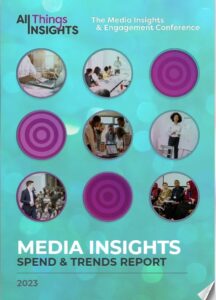In a recent ATI Gathering…Insights ROI, the community looked at the complex issue of insights return on investment from several different angles. Combining insights, data, and analytics allows for the activation of insights across the organization. Once activated, superior customer experiences can ensue. Closing the loop on learnings from the activation of insights propels the organization forward, allowing dynamic decision making, revelation of new opportunities, and ultimately better ROI.
Key challenges come into translating business insights into ROI. This includes data quality, research bias, no direct translation of insights into business KPI’s, slow decision making and fragmented data sources. Entropik’s Vibhore Pandey, Enterprise Res-Tech Specialist, looks at these issues through the lens of insights ROI, and explores possible solutions that researchers should identify and strive for. He also gives an overview of trends in information gathering and research across the product lifecycle.
With the diverse amount of research available, be it through primary or secondary research, you have to be confident in the data, advises Pandey. Make sure actionable insights are turned into business ROI. It’s the insights specialist who needs to translate this into business outcomes. Create a storyline, look for creative ways of engagement and understanding. In other words, create a connection with the data into the kind of business outcomes and insights they are looking for.
While there are multiple sources of data, different methodologies, and perhaps partners, time is also of the essence to make a decision as consumer mindsets can quickly change. Make the science more actionable and talk to customers, says Pandey.
By diving deep with the consumer, it’s also a way to erase any potential bias involved in the research. “How can we solve the balance between research and business expectations, and strive for better outcomes?” says Pandey.
One avenue to better outcomes is to bridge the gap with new technology. This can improve actionability on surveys, for example, and helps the team interact with a new product or data tool. One can better understand the confidence levels of the consumer through technology, notes Pandey.
This will also drive confidence in convincing business stakeholders of the reliability of your insights. This will create better visibility. Tools such as unified dashboards are a way to enhance collaboration between the business and research teams, make them involved in the process, and have confidence in the research being undertaken. “Create an analytics board and leverage that, it can engage the business and show them how the insights correlate with metrics,” he says.
With consumer expectations changing post-COVID, it’s also becoming more important to consolidate insights and data. The speed of insights has never been more important. If the team can bring all this fragmented data to a single unified space, it can help make sense of it for the business team.
“It’s not about just using technology to remove standards, it’s about improving actionability,” says Pandey. “It can improve communication with the business team and establish ROI at every stage of the process.”
Contributor
-

Matthew Kramer is the Digital Editor for All Things Insights & All Things Innovation. He has over 20 years of experience working in publishing and media companies, on a variety of business-to-business publications, websites and trade shows.
View all posts





























































































